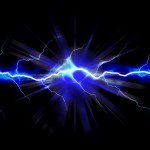Understanding Used Transfer Switches
 Every standby power system has a transfer switch. They are called this because they “switch” the power from the usual power utility source to the standby system when it is not available. In the event of a power failure the utility electrical load is automatically transferred to the generator. When the utility power is restored the transfer switch knows to automatically switch the electrical load back to the utility.
Every standby power system has a transfer switch. They are called this because they “switch” the power from the usual power utility source to the standby system when it is not available. In the event of a power failure the utility electrical load is automatically transferred to the generator. When the utility power is restored the transfer switch knows to automatically switch the electrical load back to the utility.
It is illegal to have a back-up generator without a transfer switch. That is because the switch prevents the generator from feeding electricity back into the power grid when it is on. This is called back feeding or islanding and it is an electrocution hazard as it can increase voltage levels in our neighborhood.
A transfer switch:
- Senses the interruption of power from the utility
- Sends a start signal to the generator
- Senses the power that is available
- Transfers the electricity load to the generator
- Senses the restoration of the utility power
- Retransfers the electricity load when the power is back on
- A good place to install the transfer switch is within two feet of the main distribution panel and within thirty feet of your genset inlet box.
A good place to install the transfer switch is within two feet of the main distribution panel and within thirty feet of your genset inlet box.
In most power generators the transfer switch is a separate unit that turns on automatically. However some generators meant for home use do have a manual switch. This is usually a very simple “throw” switch with an on position for the generator and an off position and an on position to connect electricity to the grid. This type of switch is all sometimes called a “double pole” switch. Many auto transfer switches also have a manual switch as well and this is a desired feature when you go shopping for a used transfer switch for sale.

